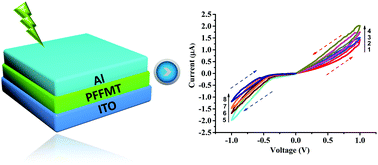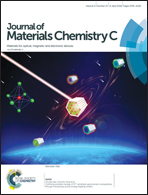Macrocyclic triphenylamine-based push–pull type polymer memristive material: synthesis and characterization
Abstract
As the most emergent target for the construction of neuromorphic networks, the emulation of synaptic responses with a memristor on the device level has attracted much attention in both microelectronic industries and academic institutes. For this reason, a newly synthesized soluble push–pull type random conjugated polymer, that is, poly[{4,4′-(((9-H-fluorene-9,9-diyl)bis(4,1-phenylene))bis(oxy))diphthalonitrile}-(9,9-di-octylfluorene)-(macrocyclic triphenylamine)] (hereafter called PFFMT), was used to fabricate a memristor with a configuration of Al/PFFMT/ITO. The device shows interesting history-dependent memristive switching performance. The synaptic potentiation and depression, the transition from short-term plasticity to long-term plasticity, the relaxation time constant of the memory decay process, and the biological stimuli of the “learning–forgetting–relearning” processes associated to the human's learning/memory functions have been demonstrated. Upon being subjected to different voltages, the conductive nature of the as-prepared memristor has also been successfully revealed via the in situ conductive atomic force microscopy technique.



 Please wait while we load your content...
Please wait while we load your content...